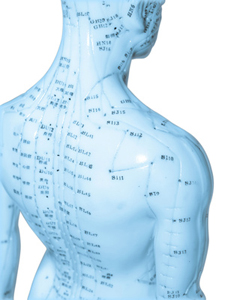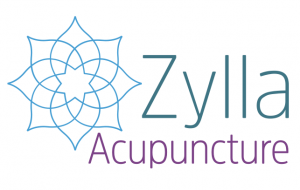ACUPUNCTURE: WHAT IS IT?
Acupuncture is the insertion of needles at very precise acupuncture points. Working with Traditional Chinese Medical theory of meridians and pathways, it encourage the body to heal, improve function, and bring it back into balance.
HOW DOES ACUPUNCTURE WORK?
The classical Chinese explanation is that channels of energy run in regular patterns through the body and over its surface. These energy channels, called meridians, are like rivers flowing through the body to irrigate and nourish the tissues. An obstruction in the movement of these energy rivers is like a dam that backs up in others.
The meridians can be influenced by needling the acupuncture points; the acupuncture needles unblock the obstructions at the dams, and reestablish the regular flow through the meridians. Acupuncture treatments can therefore help the body’s internal organs to correct imbalances in their digestion, absorption, and energy production activities, and in the circulation of their energy through the meridians.
 The modern scientific explanation is that needling the acupuncture points stimulates the nervous system to release chemicals in the muscles, spinal cord, and brain. These chemicals will either change the experience of pain, or they will trigger the release of other chemicals and hormones which influence the body’s own internal regulating system.
The modern scientific explanation is that needling the acupuncture points stimulates the nervous system to release chemicals in the muscles, spinal cord, and brain. These chemicals will either change the experience of pain, or they will trigger the release of other chemicals and hormones which influence the body’s own internal regulating system.
The improved energy and biochemical balance produced by acupuncture results in stimulating the body’s natural healing abilities, and in promoting physical and emotional well-being.
WHAT IS THE SCOPE OF ACUPUNCTURE?
Acupuncture is a system which can influence three areas of health care:
- promotion of health and well-being,
- prevention of illness,
- treatment of various medical conditions.
While acupuncture is often associated with pain control, in the hands of a well-trained practitioner it has much broader applications. Acupuncture can be effective as the only treatment used, or as an adjunct to other medical treatments,The World Health Organization recognizes the use of acupuncture in the treatment of a wide range of medical problems, including:
- Digestive disorders: gastritis and hyperacidity, spastic colon, constipation, diarrhea.
- Respiratory disorders: sinusitis, sore throat, bronchitis, asthma, recurrent chest infections.
- Neurological and muscular disorders: headaches, facial tics, neck pain, rib neuritis, frozen shoulder, tennis elbow, various forms of tendinitis, low back pain, sciatica, osteoarthritis.
- Urinary, menstrual, and reproductive problems.
Acupuncture is particularly useful in resolving physical problems related to tension and stress and emotional conditions.
If you have questions about a specific illness or disorder not listed above, you can have your questions answered by Zylla Acupuncture Plc.
Also see the table: Conditions Appropriate to Acupuncture
HOW MANY TREATMENTS WILL I NEED?
The number of treatments needed differs from person to person and depends on your condition. The general guideline is to allow 6 to 12 treatments for results. For complex or long-standing conditions, one or two treatments a week for several months may be recommended. For acute problems, usually fewer visits are required. Sometimes the relief from an acupuncture treatment are permanent, other times the effect lasts a shorter period of time as the body is trying to reset and reprogram itself. This is why more than one treatment may be required. My philosophy is to try to create change during the first treatment, and have longer lasting results obtained in fewer treatments. In a realistic approach, if the person has had the condition for more than 10 years, the likelihood of it taking more than a few treatments increases.
ARE THERE ANY SIDE EFFECTS TO THE TREATMENT?.
Usually not. As the qi is moved in the body, internal chemicals and hormones are stimulated and healing begins to take place. Occasionally the original symptoms worsen for a few days. The patient may first notice other general changes, such as improvement in mood, appetite, sleep, bowel or urination patterns, or emotional state. These subtle changes are an indications that the acupuncture is starting to work. It is quite common with thethe treatments to have a sensation of deep relaxation.
WHAT ARE THE NEEDLES LIKE? DO THEY HURT?
People experience acupuncture needling differently. Most patients feel only minimal pain as the needles are inserted; some feel no pain at all. Once the needles are in place, there is no pain felt. Acupuncture needles are very thin and solid and are made from stainless steel. The point is smooth (not hollow with cutting edges like a hypodermic needle) and insertion through the skin is not as painful as injections or blood sampling. The risk of bruising and skin irritation is less than when using a hollow needle.
Because I use disposable needles every treatment, there is little to no risk of infection from the treatments.
DOES ACUPUNCTURE REALLY WORK?
Yes. In the past 2,000 years, more people have been successfully treated with acupuncture than with all other health modalities combined. Today acupuncture is practiced widely in Asia, the Soviet Union, and in Europe. It is now being used more and more in America by people searching for answers and relief from conditions that western medicine has been unable to address.


